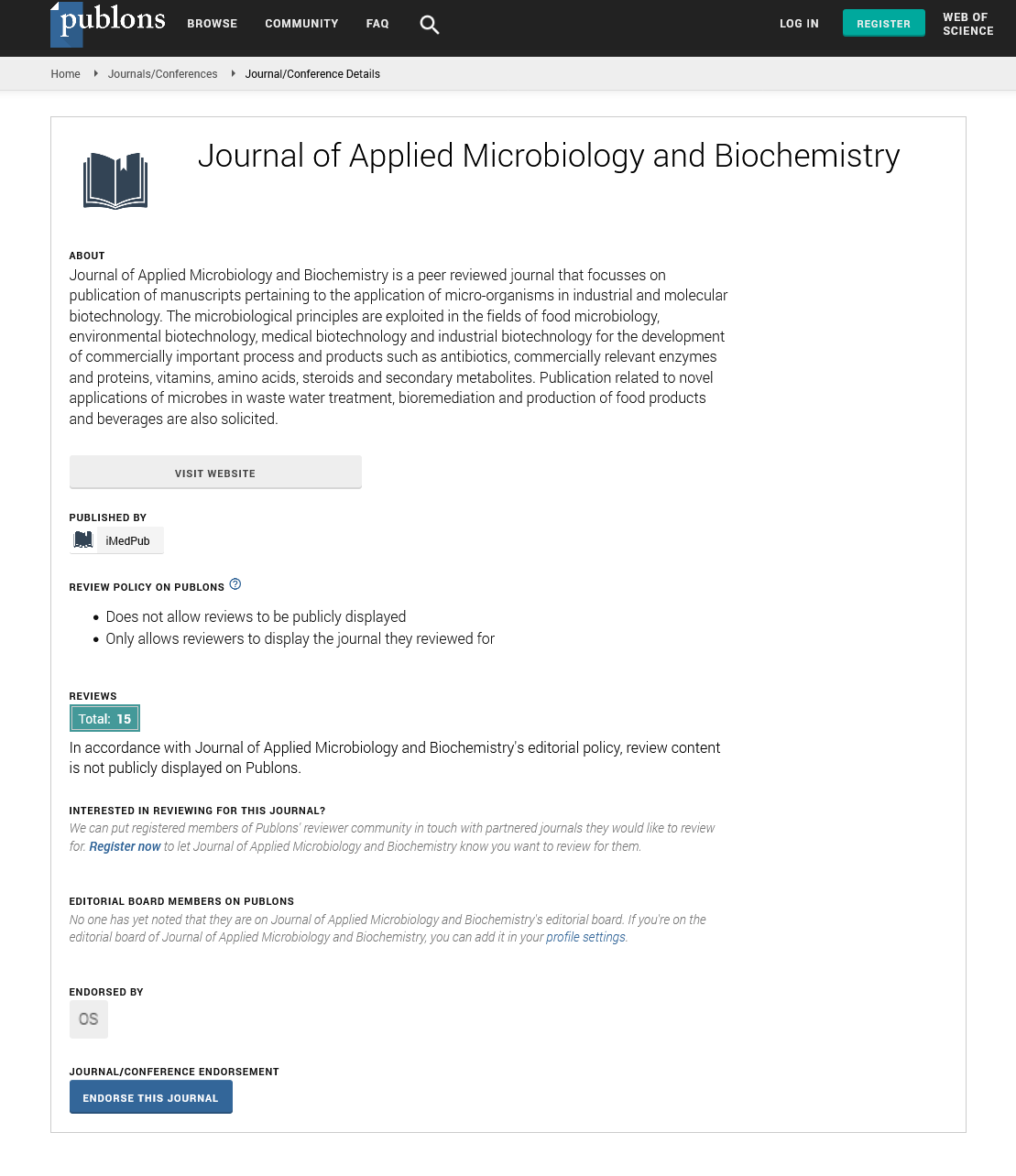ISSN : ISSN: 2576-1412
Journal of Applied Microbiology and Biochemistry
Abstract
Virulence factors analysis in streptococcus agalactiae from the clinical isolates
Streptococcus agalactiae is commonly known as Group B Streptococcus (GBS) and it is a most common cause of life-threatening bacterial infection. GBS first considered as veterinary pathogen causing mastitis in cattle, later become a human pathogen for severe neonatal infections. In this study, a total of 20 new clinical isolates of S. agalactiae were collected from male (6), and female patient (14) with different age group. The isolates were from Urinary tract infection (UTI), blood, pus and eye ulcer. All the 20 S. agalactiae isolates were identified by serogrouping and MALTI-TOF-MS analysis. Antibiotic susceptibility/resistance test was performed for 20 S. agalactiae isolates, off these phenotypic resistance pattern showed for tetracycline, vancomycin, ampicillin and penicillin. Genotypically we found two antibiotic resistance genes such as, Betalactem antibiotic resistance gene (Tem) (70%) and tetracycline resistance gene Tet(O) 15% in our isolates. Six virulence factors encoding genes were performed in twenty GBS isolates, cfb gene (100%), followed by, cylE (90.47%), lmp (85.7%), bca (71.42%), rib (38%) and low frequency in bac gene (4.76%) were determined. Most of the S. agalactiae isolates produced strong biofilm in polystyrene surface (hydrophobic), and low level biofilm formation were found in glass tube (hydrophilic) surface. lytR is secreted protein and localized in bacterial cell wall, extra cellular membrane, and cytoplasm. In silico docking studies were performed for lytR protein with four antibiofilm compounds, including a peptide (PR39) with the docking study showed peptide has strong interaction followed by Ellagic acid and interaction length is 2.95, 2.97 and 2.95 A°.
Author(s): N. Balasubramanian
Abstract | PDF
Share This Article
Google Scholar citation report
Citations : 342
Journal of Applied Microbiology and Biochemistry received 342 citations as per Google Scholar report
Journal of Applied Microbiology and Biochemistry peer review process verified at publons
Abstracted/Indexed in
- Google Scholar
- China National Knowledge Infrastructure (CNKI)
- Cosmos IF
- Directory of Research Journal Indexing (DRJI)
- Publons
- Secret Search Engine Labs
Open Access Journals
- Aquaculture & Veterinary Science
- Chemistry & Chemical Sciences
- Clinical Sciences
- Engineering
- General Science
- Genetics & Molecular Biology
- Health Care & Nursing
- Immunology & Microbiology
- Materials Science
- Mathematics & Physics
- Medical Sciences
- Neurology & Psychiatry
- Oncology & Cancer Science
- Pharmaceutical Sciences
